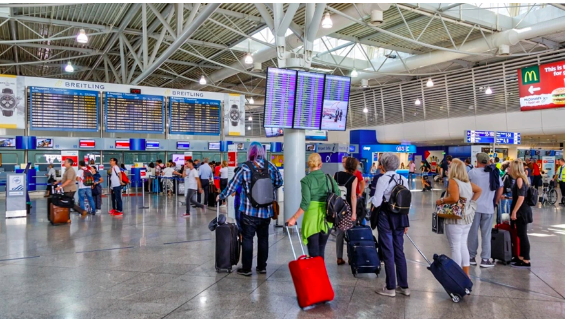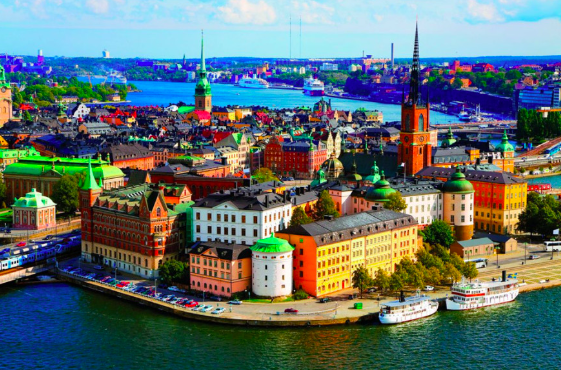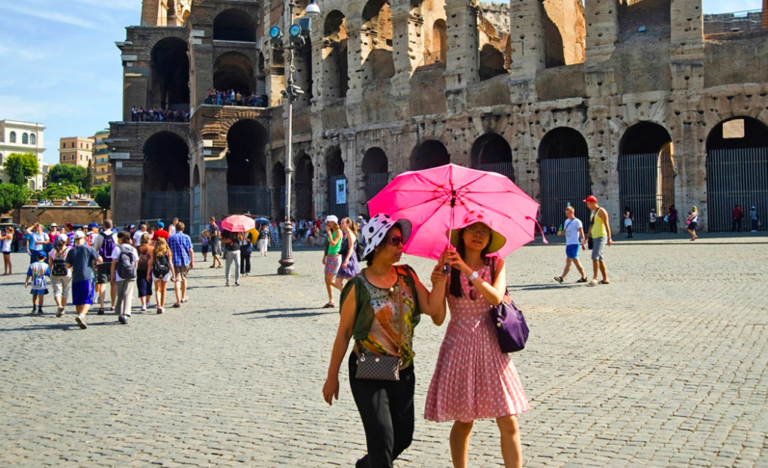Rising temperatures are changing habits, particularly for tourists who, in search of cooler summer moments, are now favoring previously lesser-known northern destinations over traditionally popular ones.
The Shift in Tourist Preferences
After all, the hottest destinations have become the least desirable. This paradox is due to heatwaves and high temperatures, which are increasingly “driving” tourists away. Southern Europe, long a favorite for summer vacations with its picturesque beaches, historic attractions, and vibrant cultures, has been experiencing extreme heat. Temperatures often exceed 40°C, posing health risks and reducing the enjoyment of outdoor activities. Consequently, many tourists are reconsidering their holiday plans.

Destinations like France, Italy, and Mallorca, once top choices for summer getaways, are being replaced by cooler northern locations such as the United Kingdom and the Scandinavian countries. According to an ETC poll, a third of Europeans avoid destinations prone to extreme weather events, while 17.3% specifically avoid places with high temperatures. Just over 16% seek holiday destinations with more stable weather, and almost one in ten (8.5%) are changing the months they travel due to concerns about extreme weather.
Impact on Popular Destinations
Although Greece, Italy, Spain, and France remain top tourist preferences, the shift in travel trends is significant. The climate crisis, with its increasing impact on daily life, is reshaping travel and tourism in Europe. As the global climate warms, heatwaves become more frequent and intense, prompting many tourists to seek cooler alternatives.
Northern Europe: The New Summer Haven
Northern European countries, including the UK and Scandinavia, are becoming attractive alternatives for those looking to escape the heat. These regions, traditionally known for their cooler and milder summer climate, are seeing an influx of tourists.
- United Kingdom: Coastal towns such as Brighton, Cornwall, and the Lake District offer beautiful scenery, pleasant weather, and plenty of outdoor activities. London, with its world-renowned cultural attractions and slightly cooler summer temperatures, is also seeing an increase in visitors.
- Scandinavia: Countries such as Norway, Sweden, and Denmark are popular for their spectacular natural landscapes, including fjords, forests, and lakes. These destinations provide a refreshing contrast to the scorching heat of southern Europe.
The Allure of Cooler Climates
Several factors make cooler northern destinations attractive. Milder temperatures allow tourists to enjoy outdoor activities without suffering from extreme heat. Hiking, sightseeing, and exploring cities are more enjoyable in cooler climates. Additionally, cooler destinations mitigate health risks associated with heatwaves, such as heat stroke and dehydration. Northern Europe also offers unique experiences like the Midnight Sun in Scandinavia, where the sun does not set for several weeks in the summer, and the rich cultural history and green landscapes of the United Kingdom.

Economic and Environmental Impacts
This change in travel trends could have significant economic and environmental impacts. Northern countries benefit from an influx of tourists, while traditional southern hotspots may experience a decline in tourism revenue. This redistribution can boost local economies in colder regions, leading to new investment in tourism infrastructure.
Moreover, tourists are becoming more aware of the environmental impact of their travel choices. The shift towards cooler destinations reflects a growing consciousness about sustainability and the desire to minimize environmental footprints.
In summary, the climate crisis is reshaping the tourism landscape, with tourists increasingly favoring cooler northern destinations over traditionally hot southern spots. This trend is likely to continue, impacting economies, travel habits, and environmental awareness.

The Impact of Climate Change on Tourism
Rising temperatures are changing travel habits, especially for tourists seeking cooler summer destinations. This shift is reshaping the tourism landscape, as traditional hotspots face challenges while cooler regions gain popularity.
The Appeal of Milder Climates
Milder temperatures allow tourists to enjoy outdoor activities like hiking, sightseeing, and city exploration without suffering from extreme heat. In contrast, heatwaves pose serious health risks, including heat stroke and dehydration. Cooler destinations mitigate these risks, providing a safer environment for travelers. Additionally, Northern Europe offers unique experiences such as the Midnight Sun in Scandinavia, where the sun does not set for several weeks in the summer, and the rich cultural history and green landscapes of the United Kingdom.
Economic and Environmental Impacts
The shift in travel trends has significant economic and environmental implications. Northern countries benefit from an influx of tourists, boosting their economies and leading to new investments in tourism infrastructure. Traditional southern hotspots, however, may see a decline in tourism revenue. This redistribution supports local economies in cooler regions and promotes sustainable tourism practices, such as eco-friendly accommodations and activities that minimize the environmental footprint.
Adaptations in Traditional Destinations
Traditional summer destinations are adapting by investing in infrastructure to make the environment more bearable during heatwaves. This includes increasing green spaces, installing cooling systems, and promoting shaded areas. However, the long-term sustainability of these adaptations remains uncertain in the face of ongoing climate change.
The Future of Tourism
As climate change evolves, the travel industry must adapt. Travel agents, airlines, and hospitality businesses are likely to develop new packages and offers that highlight cooler destinations during peak summer months. This trend underscores the need for global efforts to mitigate the climate crisis and manage its impacts across various sectors, including tourism. Ultimately, everything is interconnected, and no sector is immune to the broader effects of climate change.
Ask me anything
Explore related questions





